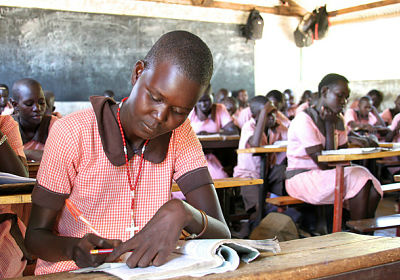Facts and Figures in Kenya

Located on the coast of the Indian Ocean in East Africa, Kenya has a population of 46 million. The country is home to Nairobi, the safari capital of the world. Here are some important facts and figures in Kenya that can help governments and organizations to eradicate poverty:
- Diseases and conditions that cause the most death and disability in Kenya include HIV/AIDS, diarrheal diseases, lower respiratory infections, neonatal encephalopathy, neonatal perform birth, congenital defects, iron deficiency anemia, malaria, neglected tropical diseases (NTDs) and meningitis. About 5.91% of adults living in the country have HIV/AIDS, which ranks Kenya thirteenth in the world for most diagnosed adults.
- The median age of the population in Kenya is 19.5, with 40.87% of the Kenyans aged under 14.
- The fertility rate is 3.14 children born per woman. The maternal mortality rate is about 510 deaths per 100,000 live births. Kenya ranks thirtieth in the world for the highest maternal mortality rate. The infant mortality rate is about 38.3 deaths per 1,000 live births. Kenya ranks fiftieth in the world for the highest infant mortality rate.
- In 2015, the child mortality rate under five was 49 deaths per 1,000. This rate had significantly decreased since 1960 when the infant mortality under five was 199 per 1,000. About 11% of children under five are underweight.
- From 2008 to 2012, UNICEF estimated primary school net enrollment for males to be 83.5% and for females 84.5%. Secondary school net enrollment for men was 51.6%, and for women, it was 48.4%. Primary school net attendance was measured at 72.4% for males and 75% for females. Secondary school net attendance was estimated at 39.5% of men and 41.6% for women.
- Life expectancy in Kenya is 64 years.
- About 82 percent of Kenyans have mobile phone subscriptions, and 45.6% have internet access.
- Approximately 63.2% of the population lives with improved drinking water. This differs from urban to rural areas, where those living with improved drinking is 81.63% and 56.82% respectively.
- Roughly 30.1% of Kenyans live with improved sanitation facilities. This rate is about the same in urban and rural areas, where the percentages are 31.2 and 29.7 respectively.
- The GDP of Kenya is $69 billion. The GDP per capita (PPP) in 2016 was $3,400. The PPP has more than doubled since 1990. The real growth rate is currently six percent. Top exports include tea, coffee, wheat and petroleum products.
Kenya has made incredible gains toward human prosperity over the years and has continued to strive to reach United Nations development goals. Like other countries, its goals include eradicating extreme poverty and hunger, achieving universal primary education, promoting gender equality. The country also has the goals of empowering women, reducing child mortality, improving maternal health, combatting HIV/AIDS, malaria and other diseases.
On top of this, the country wants to ensure environmental stability and establish global partnerships for development. Analyzing and monitoring these facts and figures in Kenya can help the country to continue to improve lives.
– Francesca Montalto
Photo: Flickr
